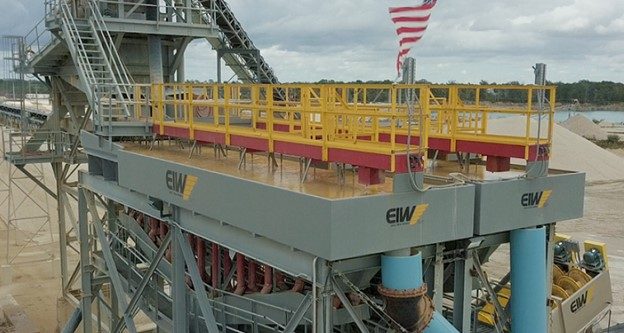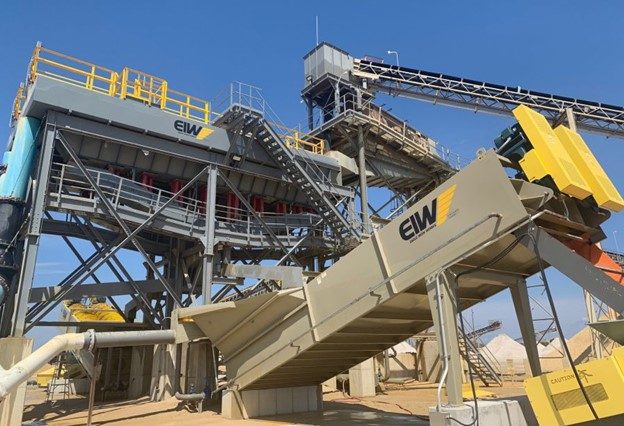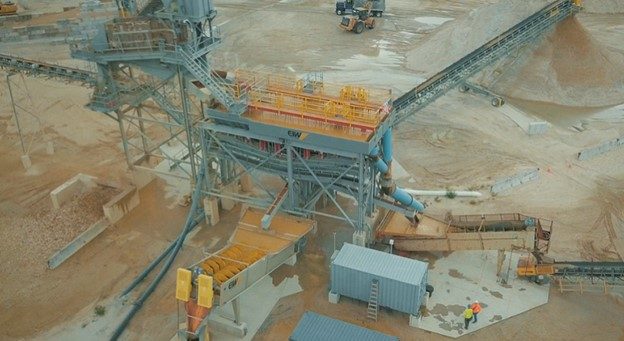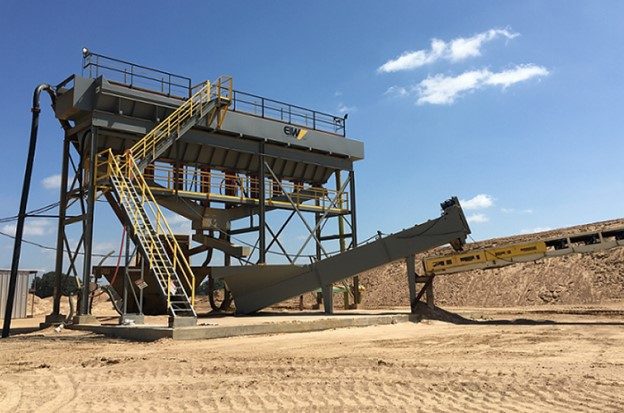Eagle Iron Works’ Classifying Tanks can be used for any of these primary functions: scalping off large amounts of water from a slurry feed; diverting excess particles from the main product; removing silt; retaining finer mesh sizes; and making multiple products from a single feed material.
Designed to remove large volumes of excess water from feed material, Eagle Water Scalping-Classifying Tanks are typically used in applications such as dredging and pumping, as well as with high silt materials. They smooth out feed fluctuations and are key in removing excess sand particles for a consistent, reliable in-spec product.
Effective and low maintenance, these units accept either slurry or a dry feed. They will handle gradation swings in the average deposit or in a manufactured crushed sand while minimizing waste. The Eagle Water Scalping-Classifying Tank has a large settling area, making it easier to retain fine mesh particles required of a typical concrete sand specification like C-33, and produce secondary and tertiary products such as masonry/mortar, asphalt, golf and other specialty sands.
How A Classifying Tank Works
Spanning the length of the tank is a valve bridge that houses six to 11 valve stations, depending on the length of the tank. Each of these valve stations typically consists of a sensing device and three hydraulic cylinders (for a 3-cell tank) that operate valves at the bottom of the tank. Via an Eagle Iron Works PLC system, the three valves at each station discharge into three separate collecting-blending flumes beneath the Classifying Tank. The flumes, in turn, recombine the fine and coarse sand fractions for each product, channeling them to dewatering equipment beneath the Classifying Tank.
Stationary, Semi-Portable and Portable Classifying Tank Plants
Eagle Iron Works can provide Classifying Tanks in three different configurations – stationary, semi-portable and portable. Stationary tanks allow for high plant customization and ease of maintenance, while requiring a supporting structure. Semi-portable plants are often modular for quick set-up, have a low feed height, and the plant structure and wiring are included; however, there is limited customization of the plant. Portable plants also have reduced options for customization but are built onto a wheeled chassis that can meet DOT standards and can be transported from site to site. They also have a low feed height requirement, and the plant comes pre-wired.
Optional Feature: Rising Current Classifiers
To improve the efficiency of hydraulic classification in their Classifying Tanks, Eagle Iron Works provides an optional rising current classifier that can be installed in the first few stations. By implementing a rising current classifier, the tank’s classification greatly improves by keeping the lightweight (smaller) sand fractions in suspension, while the heavier (larger) particles settle out in the coarse end of the tank. This helps producers achieve greater control of their final product gradations by allowing only the desired sand fractions to be reblended. While rising current classifiers improve the separation of coarse to fine mesh sand fractions, this process does not replace the need for mechanical screening for effective top size control of a product.
Product Features
Tub Construction
- Extra long weirs for maximum product retention
- Adjustable weirs for out-of-level conditions
Classifying Tank Stations
- Heavy-duty, double acting hydraulic cylinders for accurate valve discharging
- Individual electro-hydraulic valve actuating mechanisms with integral solenoid
- Hydraulic cylinders feature new seal packages for unmatched cylinder life
- Long-lasting paddle motors with sealed sensing switches
- Valve and paddle rods feature thick diameter steel
- Individual components simplify troubleshooting and minimize maintenance costs
Hydraulic Power Unit
- Robust hydraulic power unit with long service life
- Vital operating components protected by internal and external filters
Collecting-Blending Flume
- Designed to prohibit product contamination in high tonnage situations
- Flume assemblies are standard with abrasion-resistant metal liners





